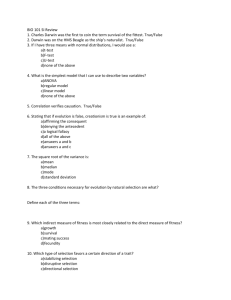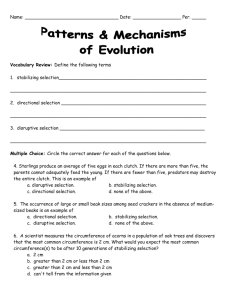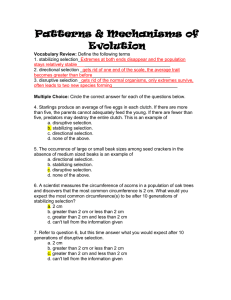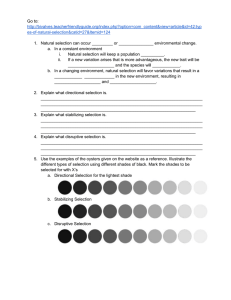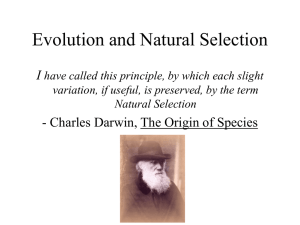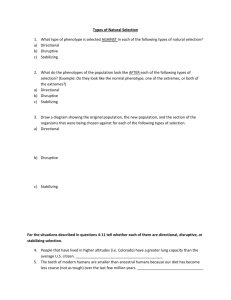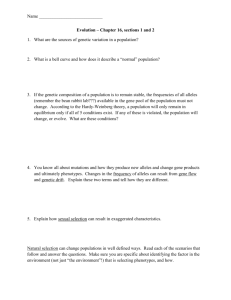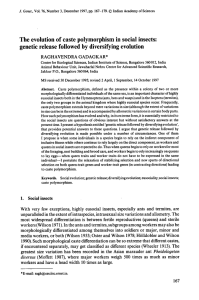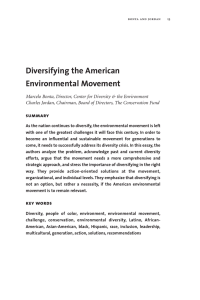Natural Selection Worksheet: Directional, Diversifying, Stabilizing
advertisement
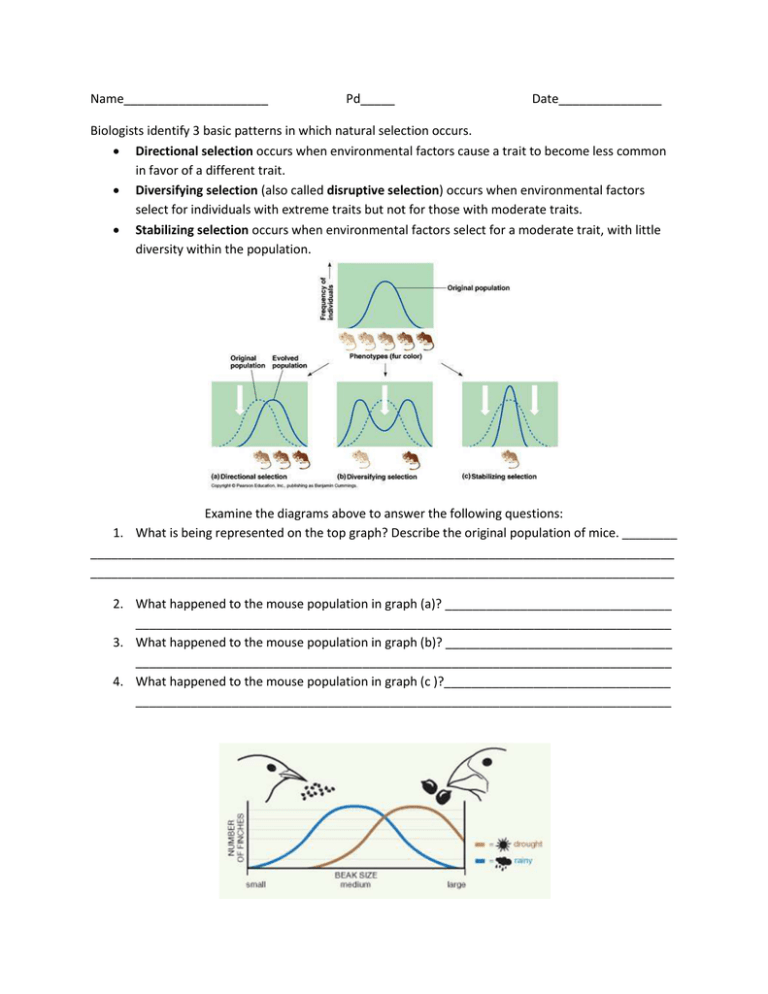
Name_____________________ Pd_____ Date_______________ Biologists identify 3 basic patterns in which natural selection occurs. Directional selection occurs when environmental factors cause a trait to become less common in favor of a different trait. Diversifying selection (also called disruptive selection) occurs when environmental factors select for individuals with extreme traits but not for those with moderate traits. Stabilizing selection occurs when environmental factors select for a moderate trait, with little diversity within the population. Examine the diagrams above to answer the following questions: 1. What is being represented on the top graph? Describe the original population of mice. ________ _____________________________________________________________________________________ _____________________________________________________________________________________ 2. What happened to the mouse population in graph (a)? _________________________________ ______________________________________________________________________________ 3. What happened to the mouse population in graph (b)? _________________________________ ______________________________________________________________________________ 4. What happened to the mouse population in graph (c )?_________________________________ ______________________________________________________________________________ 5. Is this an example of directional selection, diversifying selection, or stabilizing selection? ______________________________________________________________________________ 6. How can you tell? _______________________________________________________________ ______________________________________________________________________________ 7. What environmental factors are driving selection among these birds?_____________________ ______________________________________________________________________________ 8. Is this an example of directional selection, diversifying selection, or stabilizing selection? ______ ______________________________________________________________________________ 9. How can you tell?________________________________________________________________ ______________________________________________________________________________ 10. What environmental factors are driving selection among the gall-flies?_____________________ ______________________________________________________________________________ 11. Is this an example of directional selection, diversifying selection, or stabilizing selection? ______ ______________________________________________________________________________ 12. How can you tell?________________________________________________________________ ______________________________________________________________________________ 13. What environmental factors are driving selection among these birds?______________________ ______________________________________________________________________________ Human babies usually weigh about 6-10 pounds at birth. Babies that are smaller than 6 pounds may be underdeveloped and unable to survive out of the womb. Babies that are bigger than 10 pounds may have difficulty exiting the birth canal, which can lead to complications during the birthing process, possibly even death. 14. Is this an example of directional selection, diversifying selection, or stabilizing selection? ______ ______________________________________________________________________________ 15. How can you tell?________________________________________________________________ ______________________________________________________________________________ 16. What environmental factors are driving selection among these babies?_____________________ ______________________________________________________________________________ 17. Draw a graph in the space below that shows how size at birth is distributed across the human population. You do not need to include numbers on your Y-axis, but you do need to label it. There is a population of beautiful cacti that is found on a desert highway in Arizona. Humans that drive by will often dig up a cactus and bring it home as a houseplant. People tend to skip over the cacti with too many spines. They also tend to skip over the cacti with too few spines because they look unhealthy and produce fewer flowers. 18. Is this an example of directional selection, diversifying selection, or stabilizing selection? ______ ______________________________________________________________________________ 19. How can you tell?________________________________________________________________ ______________________________________________________________________________ 20. What environmental factors are driving selection among these cacti?______________________ ______________________________________________________________________________ 21. Draw a graph in the space below that shows how number of spines is distributed across the cacti population. You do not need to include numbers on your Y-axis, but you do need to label it.
